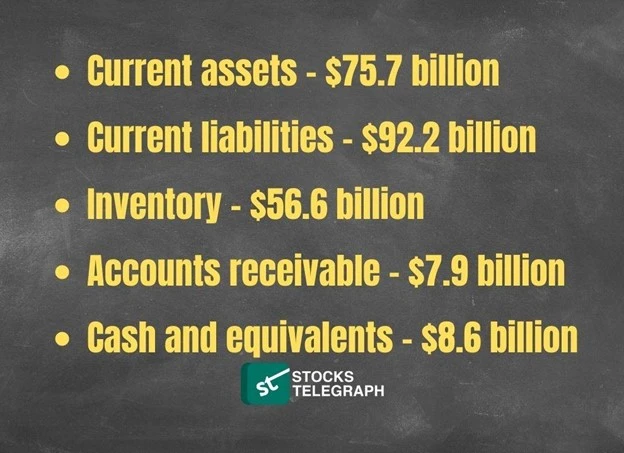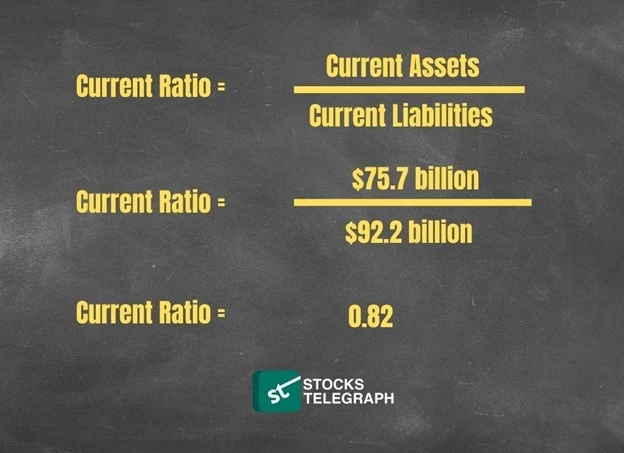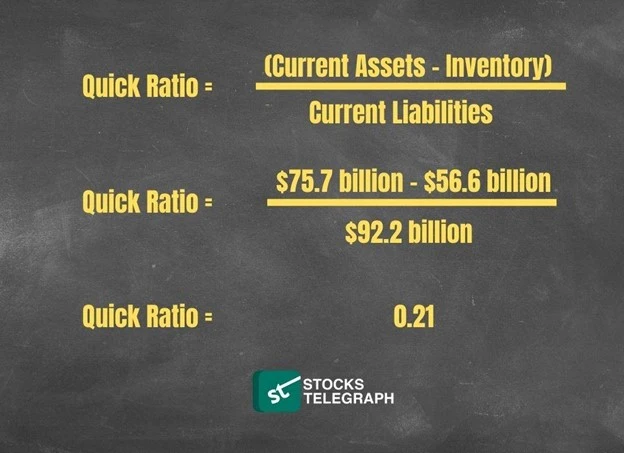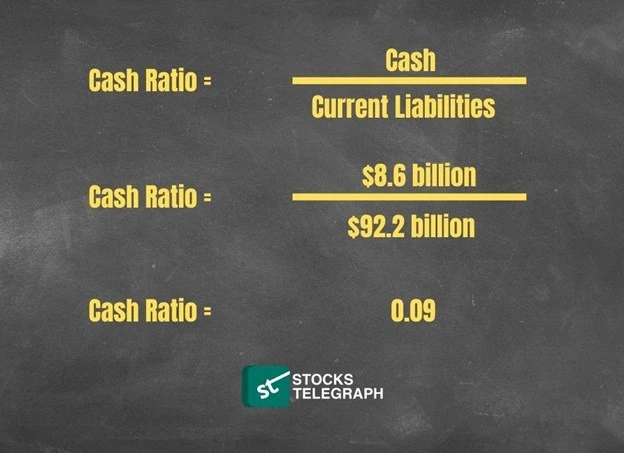Liquidity is a crucial aspect of financial markets, and measuring it accurately is essential for investors, traders, and regulators.
Liquidity, in simple terms, refers to the ease with which an asset can be bought or sold in the market without affecting its price significantly.
For any participant in the financial markets, knowing how to measure liquidity is critical. The measurement itself is a complex task, and there are several methods to do so, each with its advantages and limitations.
Understanding liquidity and its measurement is crucial for investors and financial analysts alike, in order to make informed decisions, manage risk, and ensure the smooth functioning of financial markets.
In this article, we explore how to measure liquidity in finance and delve into the various tools and techniques used by industry practitioners.
Our objective is to provide a comprehensive overview of liquidity as a market concept while emphasizing its broader importance in finance.
What Is Liquidity Financial?
In general, the term liquidity financial refers to the ease with which a given asset can be converted into cash without seeing its price being compromised.
This is crucial in finance because companies without access to cash are bound to fail catastrophically.
Even the most profitable of companies would have a hard time staying afloat without having their liquidity in check. This is because companies need running cash to meet day-to-day expenses and obligations.
Liquidity allows companies to smoothly navigate through the business landscape without getting tied down by their costs. It also allows companies to readily embark on profitable strategic opportunities as they appear.
Given its sheer importance, it is no surprise why investors are so focused on this metric before making decisions in the market. Analysts in particular focus plenty of their efforts on how to measure liquidity, given the insight it delivers on a company’s prospects.
How To Measure Liquidity?
We now get into how to measure liquidity. This is crucial for investors as well as the internal management of the company, to ensure that the business remains running, and does not face any threats that could impact its future potential.
In order to measure the liquidity of a company, the following steps would need to be taken:
-
Analyze Financial Statements
Review the company’s financial statements to gain an idea of where it stands in terms of liquidity. Pay particular attention to the balance sheet and cash flow statement.
-
Assess Present Cash Holdings
Through the current asset section in the balance sheet, have a look at the company’s total cash on hand along with any cash equivalents such as stocks that can readily be sold.
-
Looking into Immediate Obligations
Focus on the current liabilities portion of the balance sheet, and assess how heavy the short-term payables burden is on the company. This may include trade payables, short-term loans, and accrued expenses.
-
Evaluate The Cash Position In Relation To Immediate Obligations
After having looked at both the cash position and current payables, compare whether the total cash holdings exceed the immediate obligations. Determine how much of a safety margin the company has, and what portion of its payables are covered.
-
Take The Company’s Creditworthiness into Account
Ensure that you have assessed the company’s credit rating, which significantly influences the ease through which it can raise cash by lenders, in the short term.
-
Monitor Liquidity Trends Over The Long Term
Regularly go over the company’s liquidity position to see whether or not there is a sustained improvement over time. Assess whether the management is making the right decisions to ensure a sustainable liquidity position.
How To Find Liquidity?
Now that we’ve covered the importance of liquidity for beginner investors, let’s dive into the nitty-gritty of exactly how to find liquidity.
-
Trading Volume
In the financial world, we measure liquidity using trading volume. The higher the trading volume, the more people are buying and selling, and the easier it is to find liquidity.
To uncover trading volume, you can check financial websites and trading platforms.
-
Bid-Ask Spread
The gap between the highest bid and the lowest ask price is the bid-ask spread. The narrower the spread, the better the liquidity. Why? Because a smaller gap means you can buy or sell the asset without a big difference in price.
So, if you ever wonder how to find liquidity, keep an eye on assets with tight bid-ask spreads.
-
Market Depth
In the financial realm, market depth reveals the number of buy and sell orders at various price levels. It gives you a sense of how much trading activity is happening around the asset’s current price.
To find market depth, advanced trading platforms, and market data providers are your go-to sources.
-
Liquidity Ratios
Liquidity ratios are like financial health check-ups. The current ratio checks if a company can cover short-term liabilities with short-term assets, indicating better liquidity. The quick ratio focuses on the most liquid assets compared to current liabilities.
Knowing liquidity ratios are the first step in determining how to improve liquidity.
How To Improve Liquidity?
Now that we have a good grasp on how to find liquidity, let’s talk about some practical ways to enhance liquidity in your investment portfolio.
While we can’t completely eliminate illiquid investments, there are strategies that can guide you if you are wondering how to improve liquidity.
These strategies can be employed to ensure you have access to the funds you need when the time comes.
-
Diversify Your Portfolio
When it comes to boosting liquidity in your portfolio, diversification is key. Spread your investments across different asset classes and sectors to reduce the risk of illiquid assets and give yourself more options when you need quick cash.
-
Maintain A Balanced Mix of Investments
Maintain a balanced mix of investments by allocating a portion of your portfolio to liquid assets like cash, money market funds, or highly liquid stocks and bonds.
This ensures you have readily available funds for short-term needs without relying solely on selling illiquid investments. This is fundamental for anyone seeking how to improve liquidity.
-
Consider Investing In Exchange-Traded Funds (ETFs)
Investing in exchange-traded funds (ETFs) can also improve liquidity. These trade on exchanges like stocks, offering the ability to buy or sell them throughout the day at market prices.
ETFs provide greater liquidity compared to individual stocks or bonds, and certain ETFs specialize in specific sectors or asset classes, making illiquid markets more accessible.
-
Stay Informed and Anticipate Potential Liquidity Needs
Keep an eye out for any factors that could affect the liquidity of your investments. Being proactive and staying on top of things allows you to anticipate potential liquidity needs and make adjustments to your portfolio as needed.
-
Maintain An Emergency Fund
Don’t forget to maintain an emergency fund. It’s like having a financial safety net outside of your investment portfolio. This is fundamental for anyone seeking how to improve liquidity.
Keep some highly liquid assets, such as cash or easily accessible savings accounts, set aside for unexpected expenses or immediate cash needs.
This way, you won’t have to panic-sell your investments at a loss when life throws you a curveball.
How to Calculate Liquidity Ratio?
Any discussion of how to measure liquidity is simply incomplete without delving into the relevant ratios.
While we discuss most of these ratios in the subsequent sections on how to find liquidity, we feel it important to shed some light on the acid-test ratio.
The acid-test ratio helps us assess how well a company can cover its short-term liabilities using its most liquid assets. So, how do we calculate it?
- First, let’s gather the key ingredients: cash, cash equivalents, marketable securities, and accounts receivable. These assets are the lifeblood of liquidity. Next, we divide this sum by the company’s current liabilities. The result? The acid-test ratio!
- Now, what does this ratio tell us? Well, it focuses on the most easily convertible assets, excluding inventory and prepaid expenses. By doing so, it offers a conservative measure of a company’s liquidity.A higher ratio indicates a better ability to meet short-term obligations, while a lower ratio suggests potential difficulties.
- Now, imagine you’re faced with the question, “Which investment has the least liquidity?” In this scenario, the acid-test ratio becomes your trusty guide.Remember, a lower ratio means lower liquidity, so keep that in mind when evaluating different investment opportunities.
What Is The Liquidity Test Stock Market?
Liquidity does not only apply to companies and their cash holdings but also to stocks trading in secondary markets. Under this discussion, one of the most important tools is the liquidity test stock market.
The liquidity test stock refers to the ease with which particular stocks trading in the market can be bought and sold by investors.
This is highly useful information, as a stock’s value and desirability are often directly correlated with how smoothly it can switch hands.
The liquidity test stock market involves assessing individual stocks in terms of their trading volume, bid-ask spread, and other specific measurements.
Usually, when stocks have high trading volumes and narrow bid-ask spreads, they are considered to be highly liquid.
Testing the liquidity of stocks is incredibly useful to investors, as it reveals to them how much of a risk they would be assuming by investing in a particular stock.
No investor wants to face a situation where they are unable to get rid of a failing stock they own.
What Are The Different Types Of Liquidity Ratios?
It is impossible to answer the question of how to measure liquidity without going into liquidity ratios.
Although each sheds light on liquidity, they each provide a different perspective and are equally valuable to investors, analysts, and managers, alike.
The following are some of the most important liquidity ratios used in the market:
-
Current Ratio
The current ratio is the most common ratio that can tell you about a company’s liquidity through a single figure. It simply divides current assets by current liabilities and gives a numeric figure.
The higher the current ratio, the higher the number of current assets a company has in comparison to its current liabilities, and is therefore in a better position to pay off short-term obligations.
-
Quick Ratio
The quick ratio, or asset test ratio, is quite similar to the current ratio but has one key distinction. It subtracts inventory from current assets before dividing it by current liabilities.
This is done because inventory cannot be instantly converted into cash, and therefore the quick ratio is a more realistic measure of liquidity.
-
Cash Ratio
The cash ratio takes things one step further, omits all current assets entirely, apart from cash and equivalents, and then divides them by current liabilities. It is a conservative liquidity measure that directly looks at the present ability to pay off liabilities.
-
Operating Cash Flow Ratio
This ratio divides a company’s operating cash flow by its current liabilities. Instead of a current liquidity position, this assesses the ability to generate cash flow through ongoing operations in order to pay off obligations.
-
Net Working Capital Ratio
The net working capital ratio simply subtracts current liabilities from current assets, to give either a positive or negative figure. A negative figure is seen as a red flag in terms of liquidity, calling for urgent corrective action by management.
-
Defensive Interval Ratio
This ratio focuses on a company’s ability to meet its present obligations without generating any additional revenue. It divides current assets minus inventory by daily cash expenditure.
The defensive interval ratio is used in times of crisis where business operations come to a halt, or during bankruptcy procedures.
Why is Liquidity Important?
Now that we have expanded our horizons on the concept of liquidity, and are reasonably able to tell what is a good liquidity ratio, it’s time to step back and gaze upon the bigger picture here. Why exactly is liquidity so important?
-
Flexibility and Efficiency
Picture this—you spot a golden opportunity in the market, but you need to act fast. Liquidity gives you the power to buy or sell assets quickly and at a fair price.
It’s like having a secret weapon that lets you adjust your portfolio on the fly, seizing those moments when they count the most.
This becomes evident when you realize you can determine which investment has the least liquidity.
-
Risk Management
Let’s talk about the dark side—liquidity crises. What is a liquidity crisis? They’re like financial storms that can wreak havoc on your investments.
Imagine being stuck with assets you can’t sell when you need to.
By considering liquidity, you can navigate these stormy waters, protecting yourself from potential losses and managing risk like a pro.
-
Investment Performance
Liquidity is like the oil that keeps the financial machinery running smoothly. Assets with high liquidity tend to be more stable and transparent.
You can accurately assess their value and make informed decisions.
On the flip side, less liquid assets can be a wild ride, with wider spreads and unpredictable price swings.
So, pay attention to liquidity to make sure your investments perform their best. This is crucial for anyone learning how to measure liquidity.
-
Diversification Opportunities
Variety is the spice of life, and the same goes for investing. You want to spread your risks across different assets—stocks, bonds, real estate, and more.
But here’s the thing—each asset class comes with its own liquidity level.
By understanding liquidity, you can strike the right balance, diversifying your portfolio intelligently while managing risk and potentially boosting returns.
Why Is Liquidity In Trading Important For Investors?
The concept of liquidity in trading is equally important for market participants, just as liquidity financial is when studying companies. Some of the most compelling factors to consider are discussed below:
-
Ease Of Buying And Selling
The fundamental reality of liquidity in trading is that higher liquidity equates to a greater degree of ease in buying and selling. With many buyers and sellers in the market, securities are liquid, and it is easy to enter and exit from one’s position.
-
Lower Transaction Costs
Higher liquidity means narrower bid-ask spreads. When this is the case, traders spend less on brokerage fees, and there is a smaller margin between the bidding price and the asking price.
-
Risk Management
Traders are interested in the liquidity of securities in the market because it ultimately sheds light on how much risk they would be potentially assuming. Markets with low liquidity pose challenges in exiting from positions, which could lead to losses.
-
Price Discovery
Liquidity plays a major role in the determination of fair values of trading securities. Markets with high liquidity ensure efficient pricing in a transparent manner. These are highly favored by traders compared to low-liquidity markets.
-
Flexibility
Ultimately, high liquidity in trading allows traders to undertake flexible strategies, such as taking on short-position, reallocating their capital according to new information, and so on.
This sort of dynamic trading at one’s fingertips would simply not be possible in situations of low liquidity.
What are the Most Liquid Assets or Securities?
When it comes to measuring liquidity, it’s important to understand which assets or securities are considered the most liquid.
It is crucial for any investor to know that, from a certain portfolio, which investment has the least liquidity? So exactly what are these highly liquid investments?
-
Cash
Cash is the epitome of liquidity. It’s readily available and can be used for immediate transactions. It’s the most liquid asset you can have in your portfolio.
-
Government Bonds
Next up are government bonds. They are generally highly liquid due to their low default risk and active trading markets. Treasury bills, notes, and bonds issued by stable governments provide a safe haven for investors seeking liquidity.
-
Blue-Chip Stocks
Blue-chip stocks of well-established companies listed on major exchanges are also considered highly liquid. These stocks often have a large number of buyers and sellers, resulting in easy execution of trades.
-
Exchange-Traded Funds
ETFs are another option. They offer diversification and trade like stocks on exchanges, providing investors with a liquid vehicle to gain exposure to various asset classes.
Why Are Some Stocks More Liquid Than Others?
When it comes to measuring liquidity in the stock market, it’s important to understand why certain stocks are more liquid than others. There are a few key factors at play here:
-
Company Size
Firstly, the size of the company matters. Larger companies with higher market capitalization tend to be more liquid because there are more shares available for trading, attracting more buyers and sellers.
-
Trading Volume
Trading volume is another crucial factor. Stocks with higher average daily trading volumes are more liquid since there are more active participants in the market.
-
Market Size
The number of market participants and the presence of institutional investors also affect liquidity.
Stocks that appeal to a wider range of investors, including institutions, tend to be more liquid due to increased trading activity.
-
Bid-Ask Spread
Lastly, the bid-ask spread plays a role. Stocks with narrower bid-ask spreads are considered more liquid since there is less disparity in transaction prices.
What Are The Liquidity Ratio Examples?
There is hardly any better way to contextualize and solidify how to measure liquidity than by turning to examples to drive the point home. In order to do so, we have presented real data on Walmart Inc. (NYSE: WMT) from its balance sheet:

Using the information above, a number of liquidity ratios can easily be calculated.
-
Current Ratio

This current ratio of 0.82 indicates that a company may have liquidity concerns, as it has $0.82 of current assets for every $1 of current liabilities, which may suggest potential difficulty in covering its short-term obligations.
-
Quick Ratio

The quick ratio is significantly below 1, and once again points to potential liquidity risk, especially when considering that a major bulk of the company’s current assets are tied into its inventory.
-
Cash Ratio

Walmart’s cash ratio is critically low at the 0.09 figure mark. The company clearly has a thin margin of safety in terms of its liquidity.
Liquid Assets vs. Illiquid Assets
For anyone wondering how to measure liquidity, it’s crucial to understand the difference between liquid assets and illiquid assets.
The table below lists the most important of these differences:
| Liquid Assets | Illiquid Assets |
| High liquidity: Can be quickly converted to cash | Lower liquidity: Difficult to sell without a loss |
| Minimal loss in value during conversion to cash | Potential for substantial loss during the sale |
| Widely traded with active markets | Limited market with fewer buyers |
| Easily valued and priced | Valuation can be subjective and time-consuming |
While liquid assets provide you with quick access to cash, illiquid assets may require a longer investment horizon and careful consideration before committing to them.
It’s important to strike a balance between both types of assets based on your financial goals, risk tolerance, and time horizon.
Market Liquidity vs. Accounting Liquidity
The distinction between market liquidity and accounting liquidity is essential for anyone on their journey learning how to measure liquidity.
Market liquidity refers to how easily you can buy or sell an asset in the market without causing a big price swing.
It’s all about the ease of converting an asset into cash. Good market liquidity ensures you can quickly enter or exit positions without disrupting the market too much.
It’s like having a clear road ahead, allowing you to navigate your investments smoothly.
Accounting liquidity, on the other hand, focuses on a company’s ability to pay its short-term bills using its available resources. It’s like having enough fuel in your tank to keep your car running.
Accounting liquidity helps assess a company’s financial health and its ability to handle day-to-day operations without running into trouble.
The distinction is important because an asset can be easily tradable in the market (market liquid) but may not contribute to a company’s financial stability (accounting liquidity).
By understanding both types of liquidity, you can gauge how smoothly your investments can be traded and whether a company has the resources to meet its financial obligations.
Conclusion
Liquidity is a crucial measure in the market. From assessing a company’s ability to remain afloat amid growing obligations, to understanding its importance in securities markets, liquidity is of utmost importance.
Because it plays such a critical role in predicting a company’s financial health, investors, analysts, and insiders are all interested in evaluating liquidity through a range of reliable ratios that can easily be calculated.
Understanding how to measure liquidity through these ratios empowers investors and analysts to make informed decisions about a company’s liquidity position and overall financial stability, ultimately contributing to prudent investment strategies in the dynamic world of finance.
FAQs
What Is The Best Possible Measure Of Liquidity?
The best possible measure of liquidity depends on the specific context and requirements of the analysis. Every ratio sheds light on a different dimension of liquidity, so the industry, company specifications, and circumstances must all be considered.
How Do Banks Measure Liquidity?
Banks typically measure liquidity through various ratios, such as the loan-to-deposit ratio, cash reserve ratio, and net stable funding ratio, which assess the adequacy of their liquid assets in relation to liabilities, regulatory requirements, market conditions, etc.
What Is A Good LCR Ratio?
A good Liquidity Cover Ratio (LCR) is typically above 100%, indicating sufficient liquidity to cover expected cash outflows during stressed periods.
What Is a Good Liquidity Ratio?
A good liquidity ratio is typically considered to be above 1, indicating that a company has enough liquid assets to cover its short-term liabilities
Which Investment Has the Least Liquidity?
Investments with the least liquidity are often illiquid assets, such as real estate properties or certain types of collectibles, which are difficult to sell quickly without incurring substantial losses or finding suitable buyers.
What Happens If Ratios Show a Firm Is Not Liquid?
If ratios show a firm is not liquid, it may face challenges in meeting its short-term obligations, such as paying suppliers or fulfilling debt payments. It could lead to financial distress, potential defaults, and a loss of confidence from creditors and investors.
